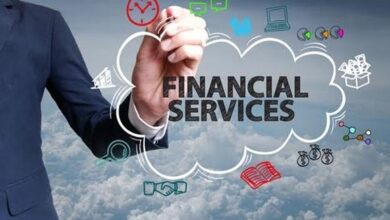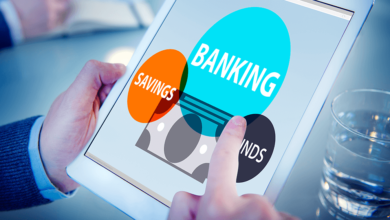
An emergency fund is an essential part of financial security which serves as a safety net during unforeseen events such as medical emergencies, job loss, or urgent home repairs. The key questions to navigate regarding the right emergency fund for you — and knowing how to handle it.
What Is an Emergency Fund?
An emergency fund is a targeted saving for unexpected expenses that would otherwise disrupt your financial health. Unlike money set aside for planned expenses or investments, money in an emergency fund is meant to cover unforeseen expenses that might otherwise lead to debt or financial hardship.
How Much Is Your Emergency Fund Target Should Be?
How large should your emergency fund be? Money specialists typically recommend the following guidelines:
- Three to Six Months’ Worth of Expenses: One common recommendation is to set aside enough to cover three to six months’ worth of living expenses. This gives a cushion against the typical interruptions to cash flow.
- Job Security Factors: You may want a larger emergency fund if your income is less stable or if you’re concerned about job security. Some experts recommend setting aside a fund to cover 12 months of expenses to prepare for long-term unemployment or income fluctuation.
- Dual-Income Households: A smaller emergency fund may be enough in households with two steady wages. At minimum, though, it’s best to save three months’ worth of expenses to cover potential income gaps.
Example:
Example: If your monthly expenses are $4,000, six months of your expenses would be $24,000 ($4,000 x 6 months).
How to Create Your “Rainy-Day” Fund
When it comes to creating an emergency fund, it takes careful planning and discipline. Here are a few tools that can help you build that financial safety net:
Set Clear Savings Goals:
- Decide on the target amount for your emergency fund based on your calculations.
- Divide the entire amount into smaller chunks or milestones so that you know your progress.
Create a Budget:
- Create a comprehensive budget to keep track of income and expenditure.
- Look for opportunities to cut back on discretionary spending so you can save more.
Automate Savings:
- Establish automated withdrawals between your checking account and a designated savings account.
- Having savings automatically deducted guarantees consistency while limiting the inclination to flaunt discretionary income.
Cut Unnecessary Expenses:
- If you had recommended cutting down on unnecessary expenditures until your expenses meet your old needs.
- Downscale services, eliminate un-used subscriptions or eat-in more often.
Utilize Windfalls:
- Direct any new sources of income, like tax refunds, bonuses, or gifts, to your emergency fund.
- Windfalls speed up your savings without affecting your everyday budget.
Choose the Right Savings Vehicle:
- Put your emergency fund in a high-yield savings account or money market fund so that it earns interest yet remains easy to access.
- It may make sense to keep your cash at a high-yield savings account for near-term access, those with competitive interest rates, no monthly fees and easy access to that money.
- Online banks and credit unions typically have higher interest rates than brick-and-mortar banks.
- Make sure the account is FDIC-insured for more protection.
Best High-Yield Savings Accounts in 2025:
- TIMBR Bank: Offers an interest rate of approximately 5% APY.
- Pibank: Offers competitive rates, averaging 5% APY.
- Atom Bank: High-interest easy-access savings account: 4.75% AER. Barron’s
Rates are subject to change at any time, and you should always confirm the rates in effect before opening an account.
A Great Way to Manage, Use Your Emergency Fund
Once you’ve set up your emergency fund, you need to manage it well:
For True Emergencies Only: Use these funds for unforeseen expenses that truly put your finances at risk, such as medical emergencies or urgent home repairs.
Only Avoid for Non-Essential Purchases: Do not touch your emergency fund for things you planned to buy, or once the emergency is over, your discretionary spending.
Restore When Used: Be sure to replace a portion of your emergency fund whenever you have to use it to ensure your financial safety net remains intact.
Building an Emergency Fund: Overcoming Challenges
Many find it too difficult to save for an emergency fund due to low income, high debt, or living expenses. Here are a few tips for handling these obstacles:
- Strategies for Reducing Debt: You may either address smaller debts initially to gain momentum through ‘debt snowball approach’, which eventually saves you cash.
- Earn more Money: Look for side jobs, part-time work jobs, or the like, or selling anything you do not use.
- Seek Financial Aid: Access Allen financial assistance programs or community resources that can provide economic relief.
How to Protect Your Emergency Fund from Inflation
A getting eaten away by inflation over time will decrease how much you have set aside in case of emergencies. To mitigate this impact:
- Regularly Review and Adjust Your Fund Size: Re-evaluate your emergency fund at regular intervals to make sure it is consistent with current living expenses and inflation rates.
- Explore Inflation-Linked Investments: Look at Treasury Inflation-Protected Securities (TIPS) or I-Bonds, as examples, which are adjusted for inflation. .time.com
- Keep a Portion in High-Yield Savings Accounts: While interest rates won’t always keep pace with inflation, having some of your emergency fund in high-yield savings accounts can at least offer some protection.
Conclusion
Building an emergency fund is one of the basics of personal finance: you can have peace of mind knowing when unexpected costs come up. By evaluating personal needs, creating achievable savings targets and employing prudent budgeting and money saving actions of any kind, you could establish a solid emergency fund suited for the situation. Again, your fund size should be relative to your own financial situation, job stability, and how many income earners are in your household. Begin saving for an emergency fund now to protect your financial future.
Start by evaluating your monthly expenses and define a pragmatic savings target for your emergency fund. Automating your savings helps you avoid spending your money on non-essentials and provide for a future more than you ever thought possible!





